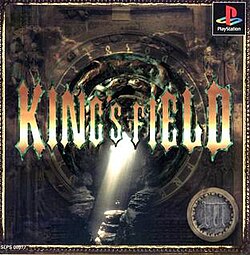Reception
Reviews for King's Field III widely praised the massive size of the game world and the resulting longevity, [8] [9] [10] and criticized the slowness of the character movement and combat. [8] [10] [11] Otherwise, however, critics were divided about the game. Of the four reviewers of Electronic Gaming Monthly , Shawn Smith praised several of the game's elements but found its gameplay too tedious, Dan Hsu and Crispin Boyer recommended it for its first person approach and various improvements over the previous installment, and Sushi-X criticized that the game is ahead of its time, using a design which would make a good future for RPGs but runs much too slow on contemporary hardware. [8] A GamePro critic noted the improvements over King's Field II but judged that the slow, unbalanced combat remained a crippling flaw, remarking that "everything onscreen looks like it's moving underwater. A melee round against a low-level creature can take up to five minutes to complete." He concluded by expressing hope that there would be no further games in the series. [11] Greg Kasavin of GameSpot also felt the improvements over King's Field II were insufficient, but primarily because they added up to more of a refinement of the original formula than a new direction. He concluded, "The first King's Field was an excellent game, and its like-minded sequel is even better. This is an exciting, non-linear journey filled to the brim with swords, sorcery, and secrets." [9] Next Generation said that the combination of the action and RPG genres results in the game being shallow and dull by the standards of both genres, though they felt it could still be worthwhile for players who don't mind its slow pace. [10]
This page is based on this
Wikipedia article Text is available under the
CC BY-SA 4.0 license; additional terms may apply.
Images, videos and audio are available under their respective licenses.
